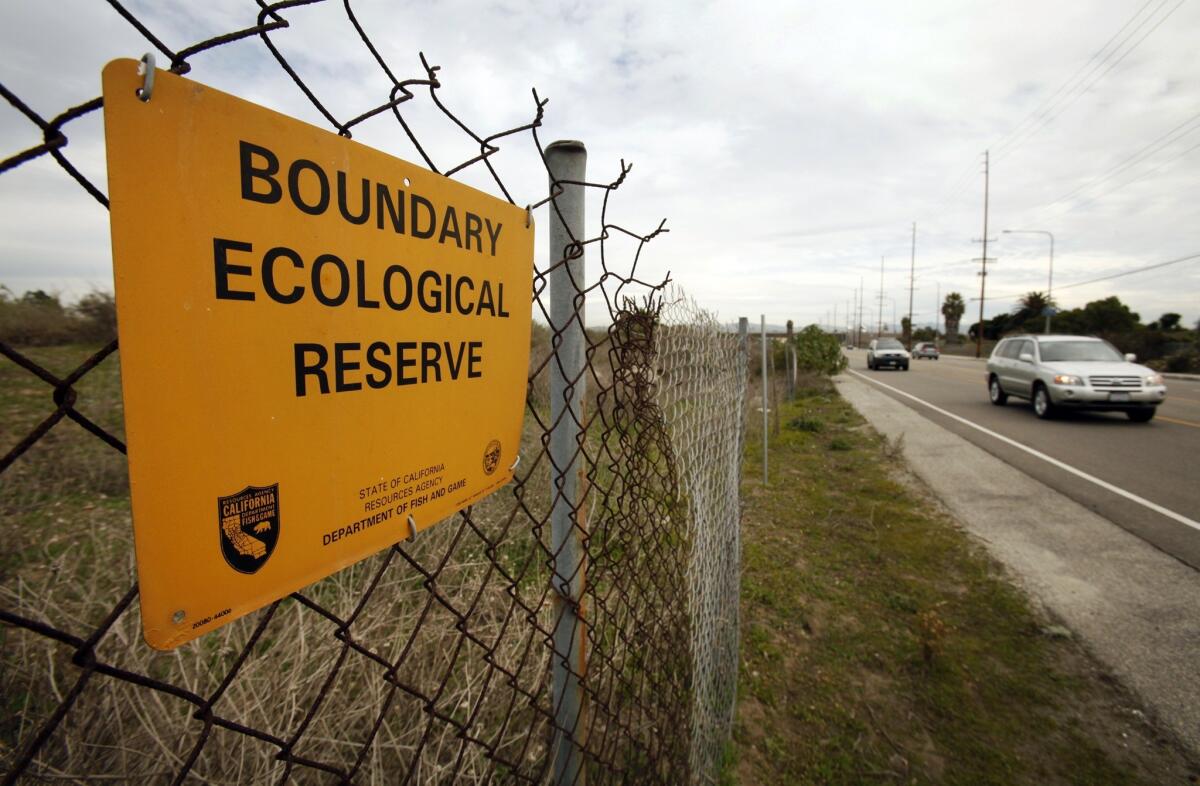Letters to the Editor: Finally, a chance for the Ballona Wetlands to flourish

- Share via
To the editor: In 1972 I founded Friends of Ballona Wetlands. We began with 10 people in my living room and are now the leading organization devoted to the wetland. (“State approves Ballona Wetlands restoration plan that divides environmentalists,” Dec. 31)
We have participated in every hearing and public forum. We have fully participated in commenting on the environmental impact report for the restoration that was certified in the waning days of 2020.
Time has been Ballona’s enemy. Over the last century, it has shrunk from more than 2,000 acres to 640, only 30 of which are still functioning wetland.
The construction of the freshwater marsh has shown how successful restoration can be. Once filled and furrowed by farming, it is now a flourishing marsh that supports more species than all the rest of Ballona. Friends of Ballona Wetlands has seen how much even small projects can heal some of the old wounds.
It is estimated that it will take 10 years to complete restoration. When one considers that it has taken more than 150 years to bring Ballona to its current sorry state, 10 years is the blink of an eye, and the reward will be a fully functioning wetland habitat teeming with wildlife that needs this place between land and sea to survive.
I will celebrate my 90th birthday in July. Chances are I will never see a restored Ballona Wetlands. But my children and their children will — and isn’t that what it’s all about?
Ruth Lansford, Playa del Rey
..
To the editor: If a rose by any other name would smell as sweet, then certainly human interference masquerading as restoration is still human interference.
Sure, there will be years of bulldozing at Ballona. That has been addressed. But what about our lingering impact on one of the last remaining wild areas? A 2018 study showed that only 23% of the Earth’s land (excluding Antarctica) remains as wilderness.
Any restoration plan that calls for the introduction of walking paths and bike trails through the habitat of endangered species is cause for great concern. There is already the Ballona Bike Path, which allows users a perimeter view of the wetland while also giving the wildlife room to remain wild.
In a city where so much land has been given to the public for recreational use, can’t there be one place that we give to the birds for their own use?
Brittany DeValdenebro, Playa del Rey
More to Read
A cure for the common opinion
Get thought-provoking perspectives with our weekly newsletter.
You may occasionally receive promotional content from the Los Angeles Times.









